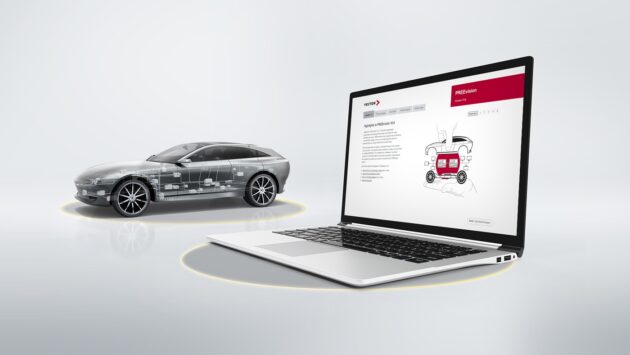You can now perform communication design that is exclusively signal-driven, and combine AUTOSAR Adaptive and Classic in electrical/electronic (E/E) systems with even greater ease: Vector provides new, powerful, and flexible design and engineering options in PREEvision 10.0 – regardless of the bus technologies, design strategies or development processes in use.
A new version of the Vector development environment for E/E systems is now available: PREEvision 10.0, which enables both signal-based and service-oriented architectures. This upgrades capabilities for all key bus technologies and further bridges the gap between AUTOSAR Classic and AUTOSAR Adaptive. Additional use cases support engineers in designing communications.
PREEvision 10.0 allows engineers to develop communication designs that are based exclusively on signals. Typically, a communication design is derived from the logical or software architecture. In some cases, a communication design is developed independently of these architectures. To facilitate this, signals may now be assigned directly to each Electronic Control Unit (‘ECU’) that serves as the sender or a receiver of the signal. The integrated PREEvision signal router then automatically creates needed transmissions.
The tables and tools needed for the communication design process are available individually and are also provided as an integrated toolset, referred to as an ‘Explorer’. This Explorer facilitates the design of signals or system signals and technology-specific aspects such as LIN scheduling, secured PDUs and transport protocols for CAN or SOME/IP. The Explorer helps engineers move through all related process steps purposefully and efficiently, as it allows them to automatically create the necessary communication infrastructure, the communications clusters for the bus systems, and network management. Consistency checks are provided to validate that the design is AUTOSAR-compliant.
Further improvements were also made for the development of systems that combine AUTOSAR Adaptive and AUTOSAR Classic. PREEvision 10.0 lets engineers allocate services that are used by AUTOSAR Adaptive as well as signals in AUTOSAR Classic. These allocations serve as a bridge between the service-oriented communication of AUTOSAR Adaptive and the signal-based communication of the Classic platform. This gives developers an elegant solution for combining both worlds into their ECU and vehicle architectures.
In its advanced development of PREEvision, Vector placed high value on ergonomics and user-friendliness, and performance of the application. These aspects were optimized in many areas of PREEvision 10.0. For example, additional Explorers facilitate the engineering of software functions and diagnostic objects.
| For more information go to: www.vector.com/preevision |
| About Vector
Vector is the leading manufacturer of software tools and embedded components for the development of electronic systems and their networking with many different systems from CAN to Automotive Ethernet. |
